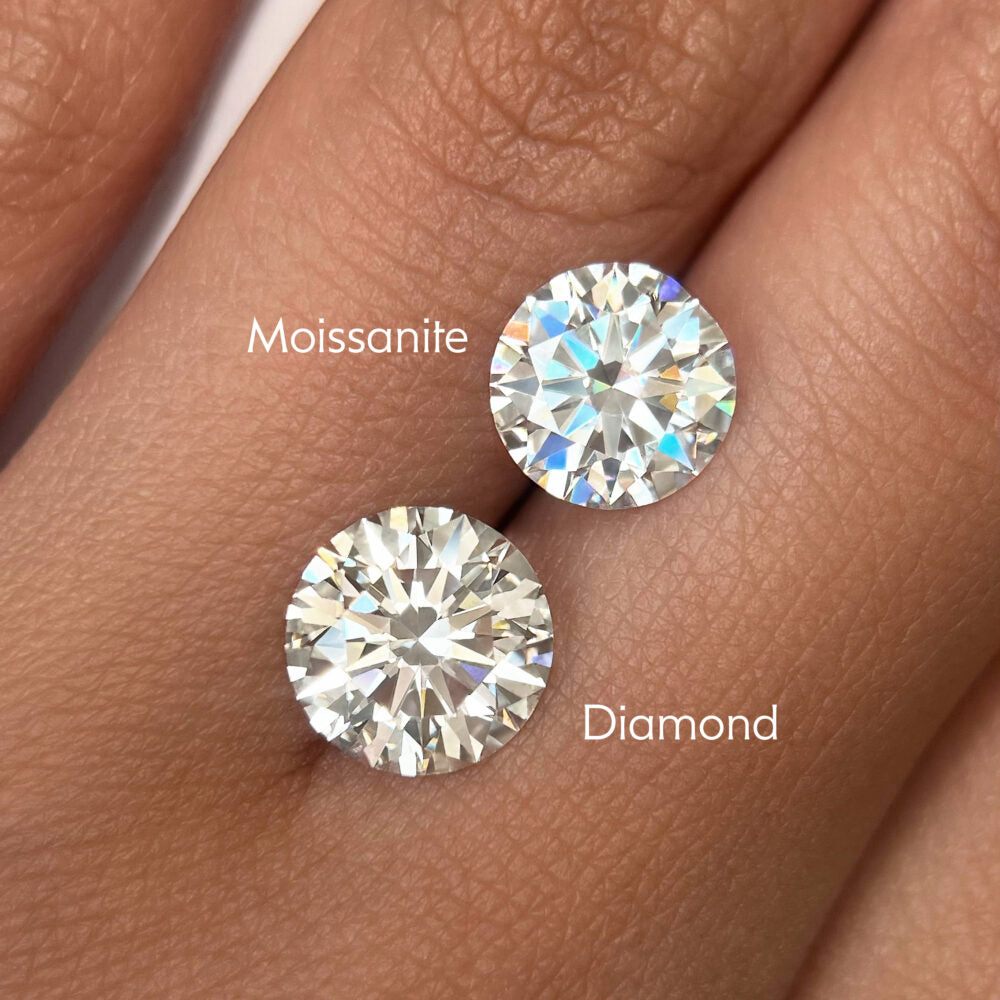
It's Not That Diamonds Are Unaffordable; It's That Moissanite Offers Better Value
Compartir
It's Not That Diamonds Are Unaffordable; It's That Moissanite Offers Better Value
Diamonds. The word conjures images of timeless elegance, unwavering commitment, and… a hefty price tag. For many couples, the cost of a diamond engagement ring represents a significant financial hurdle. But what if there was a stunning alternative that offered comparable brilliance and durability at a fraction of the cost? Enter moissanite, a gemstone that's rapidly challenging the diamond's reign. This article will delve into why moissanite isn't just a cheaper alternative; it's a smarter, more valuable choice for the modern consumer.
The Price Factor: A Significant Advantage
The most immediate and compelling reason to consider moissanite is its price. Let's break down the economics of both gemstones.
Diamond Pricing: A Market Driven by Scarcity
Diamonds are expensive because they are rare. The De Beers cartel, for decades, meticulously controlled the diamond market, creating artificial scarcity and driving up prices. While this control has lessened, the inherent rarity of high-quality diamonds continues to inflate their cost. The price per carat can easily reach thousands of dollars, especially for larger, flawless stones.
Moissanite Pricing: Accessibility and Value
Moissanite, on the other hand, is significantly more accessible. This controlled production allows for a much lower price point, typically ranging from $50 to $200 per carat, depending on cut and clarity. This affordability opens up the possibility of larger, more dazzling stones for those with tighter budgets.

Brilliance and Fire: A Sparkling Comparison
Beyond price, the visual appeal of moissanite is a key factor. Many believe it surpasses diamonds in certain aspects.
The Science of Sparkle: Refractive Index
Moissanite boasts a higher refractive index than diamonds (2.65 vs. 2.42). This means it bends light more effectively, resulting in exceptional brilliance and fire. This translates to a more intense sparkle and a rainbow-like display of color, often described as more vibrant than a diamond's.
Visual Appeal: A Matter of Personal Preference
While the scientific data supports moissanite's superior brilliance, the ultimate judgment rests on personal preference. Some prefer the classic, subtle sparkle of a diamond, while others are captivated by moissanite's dazzling display. Ultimately, the "better" choice depends on individual taste.
Durability and Hardness: Standing the Test of Time
Engagement rings are meant to be worn daily, enduring the wear and tear of everyday life. Both diamonds and moissanite hold up remarkably well.
Mohs Hardness Scale: A Comparative Analysis
On the Mohs Hardness Scale, diamonds score a perfect 10, representing the highest level of hardness. Moissanite scores a 9.25, placing it just below diamonds but significantly harder than other gemstones like sapphires (9) and rubies (9). This exceptional hardness ensures that moissanite rings can withstand daily wear without significant damage.
Everyday Wear and Tear: Practical Considerations
While diamonds are slightly harder, the difference is negligible for everyday wear. Both gemstones are exceptionally durable and resistant to scratching. With proper care, both moissanite and diamond rings will maintain their beauty for years to come.
Ethical and Environmental Considerations
Beyond the aesthetics and price, ethical and environmental concerns are increasingly important to consumers.
Conflict-Free Sourcing: Moissanite's Advantage
The diamond industry has a controversial history, with "blood diamonds" mined in conflict zones fueling violence and human rights abuses. While the industry has made strides towards ethical sourcing, concerns remain. Moissanite, being eliminates these ethical concerns entirely. Its production is controlled and transparent, ensuring a conflict-free origin.
Environmental Impact: A Sustainable Choice
Diamond mining has a significant environmental impact, requiring extensive land clearing, water usage, and energy consumption. Moissanite's drastically reduces its environmental footprint. The production process is more sustainable, consuming less energy and resources than diamond mining.
The Verdict: Making an Informed Decision
Choosing between a diamond and moissanite is a personal decision. Diamonds represent a traditional symbol of luxury and enduring value, but their high cost and ethical concerns are significant drawbacks. Moissanite offers a compelling alternative, providing exceptional brilliance, durability, and ethical sourcing at a significantly lower price.
Conclusion: Redefining Luxury and Value
In the end, the "better" choice depends on individual priorities. If budget is a primary concern, or if ethical and environmental considerations are paramount, moissanite offers superior value. It's not about compromising on beauty or quality; it's about making a smart, informed decision that aligns with your values and financial realities. Moissanite allows you to redefine luxury, focusing on brilliance, durability, and ethical sourcing without the exorbitant price tag.
